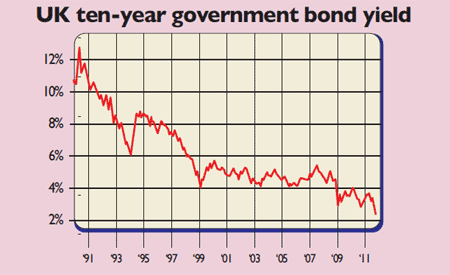
Here we go again. Last week the Bank of England announced a second round of quantitative easing, or money printing (QE2). It said it would create another £75bn of money and use it to buy long-dated gilts over the next four months. Having printed £200bn during the first bout of QE, the Bank will then have conjured up a sum worth 19% of GDP. Stocks bounced on the news. But can they keep rallying?
The hope is that more printed money will bolster growth now that the recovery is faltering and the global outlook is darkening. Specifically, the aim is to drive gilt yields down by buying up bonds (yields fall as bond prices rise). Lower yields mean lower long-term interest rates, which should stimulate borrowing. Will it work? It didn’t last time.
QE “created asset bubbles and inflation, not sustainable growth”, says Ros Altmann, director-general of Saga. Injecting extra cash into the economy did nothing to stimulate growth through more lending and borrowing. The underlying problem is that, after a credit binge, banks and households have to repair their balance sheets, so there is little appetite for lending or borrowing, no matter how much money is made available.
It’s also hard to see how lower long-term interest rates can give growth a fillip. Long bond yields are already at historic lows, yet “they have failed to generate growth”, says Lex in the Financial Times. This also points to a lack of animal spirits in a deleveraging economy.
What does seem pretty clear, however, is that last time QE money leaked into asset markets, spurring inflation through a rebound in commodities. A rise in inflation from already high levels remains a danger – not only potentially through higher raw materials prices, but also because printing more pounds makes the currency worth less, and a falling currency spurs inflation. Moreover, the more printed money in the economy, the greater the danger of inflation taking off once demand finally recovers.
Any liquidity boost for the stockmarket from QE, moreover, could well be undermined by external problems, says Morgan Stanley. “There is still a threat of a double-dip recession in Europe and the US.” Given all this, QE2 looks unlikely to produce even a multi-day feel-good rally, let alone a sustainable stockmarket bounce based on genuinely improved growth prospects.